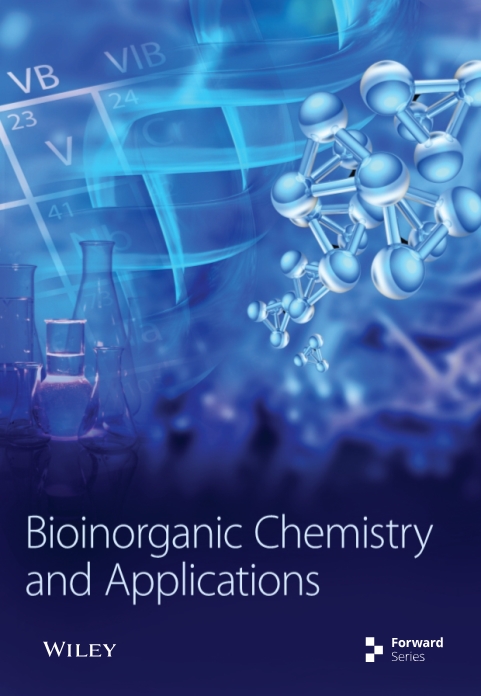Anticancer, Antibacterial, Antioxidant, and DNA-Binding Study of Metal-Phenalenyl Complexes
IF 4.1
3区 化学
Q1 BIOCHEMISTRY & MOLECULAR BIOLOGY
引用次数: 6
Abstract
Phenalenyl (PLY)-based metal complexes are a new addition to the metal complex family. Various applications of metal-based phenalenyl complexes (metal-PLY) have been reported, such as catalyst, quantum spin simulators, spin electronic devices, and molecular conductors, but the biological significance of metal-PLY (metal = Co(II), Mn(III), Ni(II), Fe(III), and Al(III)) systems has yet to be explored. In this study, the anticancer properties of such complexes were investigated in ovarian cancer cells (SKOV3 and HEY A8), and the cytotoxicity was comparable to that of other platinum-based drugs. Antibacterial activity of the metal-PLY complexes against both gram-negative (E. coli) and gram-positive (S. aureus) bacteria was studied using a disk diffusion test and minimum inhibitory concentration (MIC) methods. All five metal-PLY complexes showed significant antibacterial activity against both bacterial strains. The antioxidant properties of metal-PLY complexes were evaluated following the 2,2-diphenyl-1-picrylhydrazyl (DPPH) scavenging method and were acceptable. The DNA-binding properties of these metal-PLY complexes were investigated using absorption spectroscopy, fluorescence spectroscopy, viscosity measurements, and thermal denaturation methods. Experimental evidence revealed that the complexes bind to DNA through intercalation, and the molecular docking study supported this conclusion.金属-苯烯基配合物的抗癌、抗菌、抗氧化及dna结合研究
苯乙烯基(PLY)金属配合物是金属配合物家族的新成员。金属基苯烯基配合物(metal- ply)在催化剂、量子自旋模拟器、自旋电子器件和分子导体等方面的应用已有报道,但金属- ply(金属= Co(II)、Mn(III)、Ni(II)、Fe(III)和Al(III))体系的生物学意义尚未探索。本研究在卵巢癌细胞中研究了这类复合物(SKOV3和HEY A8)的抗癌特性,其细胞毒性与其他铂类药物相当。采用纸片扩散试验和最低抑菌浓度(MIC)法研究了金属- ply配合物对革兰氏阴性(大肠杆菌)和革兰氏阳性(金黄色葡萄球菌)的抑菌活性。五种金属- ply配合物对两种细菌均有明显的抑菌活性。采用2,2-二苯基-1-吡啶酰肼(DPPH)清除法对金属- ply配合物的抗氧化性能进行了评价,结果是可以接受的。利用吸收光谱、荧光光谱、粘度测量和热变性方法研究了这些金属- ply配合物的dna结合特性。实验证据表明,这些复合物通过插层与DNA结合,分子对接研究支持了这一结论。
本文章由计算机程序翻译,如有差异,请以英文原文为准。
求助全文
约1分钟内获得全文
求助全文
来源期刊

Bioinorganic Chemistry and Applications
化学-生化与分子生物学
CiteScore
7.00
自引率
5.30%
发文量
105
审稿时长
>12 weeks
期刊介绍:
Bioinorganic Chemistry and Applications is primarily devoted to original research papers, but also publishes review articles, editorials, and letter to the editor in the general field of bioinorganic chemistry and its applications. Its scope includes all aspects of bioinorganic chemistry, including bioorganometallic chemistry and applied bioinorganic chemistry. The journal welcomes papers relating to metalloenzymes and model compounds, metal-based drugs, biomaterials, biocatalysis and bioelectronics, metals in biology and medicine, metals toxicology and metals in the environment, metal interactions with biomolecules and spectroscopic applications.
 求助内容:
求助内容: 应助结果提醒方式:
应助结果提醒方式:


